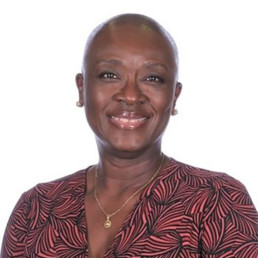The Hidden Wounds of Leadership: When Strength Becomes Survival

Written by Remi Atoyebi
Remi Atoyebi is an experienced Headteacher and ICF Certified Transformational and Leadership Coach. She is a contributor to The Headteachers’ Handbook and a mentor to over 50 school leaders across the UK. As a leader from a Global Majority background, she is passionate about inclusive leadership, psychological safety, and creating safe spaces for underrepresented voices.
As one of just a handful of leaders from a Global Majority background in the area I serve, I’ve had to do more than lead a school. I’ve had to build trust from the ground up, raise community aspirations, and create a sanctuary of belonging for children who had so often been left behind. Publicly, I was praised. Data climbed. Headlines followed. People saw progress.
But what they didn’t see was me.
They didn’t see the toll it took: emotionally, mentally, physically, to keep showing up, every single day, as the “strong one.” The “resilient” one. The one who could weather it all. Behind the applause, I was slowly falling apart.
As a Black woman in leadership, I became an expert at navigating systems that were never designed for me to thrive in. I wore the armour of excellence because I had no choice. I bore the weight of expectation, not just professionally, but culturally: the silent pressure to prove, to represent, to protect. I was leading a school, yes. But I was also holding up the dreams of my community, the pride of my family, and the unsaid duty to never falter.
Then one day, my body gave in. I was taken by ambulance from work to A&E. I had suffered a Transient Ischemic Attack (TIA): https://www.nhs.uk/conditions/transient-ischaemic-attack-tia/ and soon after, I was diagnosed with Post-traumatic stress disorder(PTSD): https://www.nhs.uk/mental-health/conditions/post-traumatic-stress-disorder-ptsd/overview/
These events were not from one tragic moment, but from the relentless drip-feed of stress, microaggressions, harassment, racial trauma, and systemic pressure that had compounded over years.
The trigger was one parent’s sustained harassment over two and a half years: sometimes emailing up to three times a day to make unnecessary demands, engaging in attention-seeking behaviours, inciting other parents, and making incessant reports to the Local Authority Designated Officer (LADO), Office for Standards in Education, Children’s Services and Skills (OFSTED), the Teacher Regulatory Agency (TRA), and the Information Commissioner’s Office (ICO).
I had been leading while bleeding.
This is what we don’t talk about enough. The unspoken cost of being the first. The only. The one expected to be everything to everyone. For many Black women in leadership, success often comes wrapped in loneliness. We carry the school, the staff, the children, their families and then we carry what no one else sees: the barbed comments, the subtle exclusions, the extra scrutiny.
Over time, I’ve come to name this for what it is…structural neglect. Not always overt. Not always intentional. But neglect nonetheless: of our wellbeing, our emotional safety, our humanity. Mental health services are not culturally competent. DEI work barely scratches the surface. And leadership frameworks rarely account for the invisible labour of navigating bias and battling stereotypes.
The Equality Act 2010 lists both Race and Disability as protected characteristics. But where was the protection when I was unravelling from the inside out? Where were the policies that acknowledged the trauma of ‘performing strength’ in the face of constant pressure? Where was the care for leaders like me?
And let’s talk about race and mental health. Black women are less likely to be referred for therapy, more likely to be misdiagnosed, more likely to go unheard. (https://www.mind.org.uk/information-support/tips-for-everyday-living/racism-and-mental-health/#HowRacismCanAffectYourMentalHealth).
In leadership, the expectation to remain poised and polished becomes a ‘prison’. We silence our needs just to be seen as competent and effective.
So, how do we disrupt this?
We start by telling the truth. We say out loud that leadership takes a toll. We give permission to ourselves and others to feel, to pause, to say “this is too much.”
We embed trauma-informed approaches not just for children, but for the adults in our schools, especially those living through racialised experiences. We make room for healing. For culturally competent therapy. For coaching that holds space rather than just drives outcomes.
We must let go of the myth that strength means silence, and in its place, we embrace a deeper truth that vulnerability is not weakness, it is wisdom. It is the path to healing, to connection and to lasting change.
I’m still healing. I’m still learning how to lead without sacrificing myself. Still untangling from a version of success that asked me to shrink, to be silent, to disappear. But no more. From here on, I will be leading differently: to protect my health, my wellbeing and ultimately, my life.
And if my story does anything, I hope it reminds someone, maybe you, that you are not alone. That leadership must never cost you your health. That you don’t have to break to belong and succeed.
Leading with Heart: Why Humanity Belongs in Leadership

Written by Sarah Mullin
Deputy Headteacher and EdD student
When Chancellor Rachel Reeves appeared tearful during Prime Minister’s Questions, it became national news. Speculation followed. Some questioned her professionalism. Others expressed empathy. But what if her emotion wasn’t about weakness or pressure — what if it simply showed that she cared?
We may never know what Reeves was feeling, and that’s not the point. What matters is how society responded. In contrast, when Prime Minister Keir Starmer’s voice cracked with emotion moments earlier, many praised his sincerity. The double standard reminds us that we still judge emotional expression differently in men and women — and that’s something schools have the power to change.
In my doctoral research with women secondary headteachers, many shared the pressure to appear composed at all times. One told me:
“I’ve learned to hide my emotions because if I show them, people assume I’m not coping.”
Another said:
“I care deeply about my staff and pupils. But there’s still a sense that to be respected, you have to be hard.”
This expectation isn’t just unfair — it’s limiting. When we reduce leadership to stoicism, we ignore the relational skills that make leaders truly effective: empathy, emotional intelligence, and care.
That’s why these public moments of emotion matter. Because our young people are watching.
Girls need to see that leadership doesn’t require hiding your feelings or shrinking your identity. That you can be strong, successful, and still be yourself. And boys need to see that care and vulnerability aren’t weaknesses — they are part of responsible, emotionally mature leadership.
In schools, we have the chance to model a broader, healthier version of what leadership looks like — not just in what we say, but in how we lead. Staff and students alike benefit from environments where humanity is welcomed, not hidden.
Let’s create a culture where showing heart doesn’t undermine leadership — it defines it.
Courageous Conversations

Written by Hannah Wilson
Founder of Diverse Educators
What is a Courageous Conversation?
In courageous conversations, whether in the context of performance appraisal, mentoring, or coaching, individuals are encouraged to express their views openly and truthfully, rather than defensively or with the purpose of laying blame. Integral to courageous conversations is an openness to learn.
What Is an Example of a Courageous Conversation?
Typical examples include handling conflict, confronting a colleague, expressing an unpopular idea on a team, asking for a favour, saying no to a request for a favour, asking for a raise, or trying to have a conversation with someone who is avoiding you. Research shows that many women find such “courageous conversations” challenging.
How Do You Frame a Courageous Conversation?
- Set your intentions clearly.
- Create a container.
- Prepare facilitators & groups.
- Set it up.
- Open with vulnerability.
- Have the discussion.
- Come back together and close.
- Support each other.
What Does the Research Tell Us About Courageous Conversations?
According to the work of Susan Scott there are The Seven Principles of Fierce Conversations:
- Master the courage to interrogate reality. Are your assumptions valid? Has anything changed? What is now required of you? Of others?
- Come out from behind yourself into the conversation and make it real. When the conversation is real, change can occur before the conversation is over.
- Be here, prepared to be nowhere else. Speak and listen as if this is the most important conversation you will ever have with this person.
- Tackle your toughest challenge today. Identify and then confront the real obstacles in your path. Confrontation should be a search for the truth. Healthy relationships include both confrontation and appreciation.
- Obey your instincts. During each conversation, listen for more than content. Listen for emotion and intent as well. Act on your instincts rather than passing them over for fear that you could be wrong or that you might offend.
- Take responsibility for your emotional wake. For a leader there is no trivial comment. The conversation is not about the relationship; the conversation is the relationship. Learning to deliver the message without the load allows you to speak with clarity, conviction, and compassion.
- Let silence do the heavy lifting. Talk with people, not at them. Memorable conversations include breathing space. Slow down the conversation so that insight can occur in the space between words.
“When they try to deny us, resist with Shades of Bias!”

Written by Wayne Reid
Professional Officer & Social Worker
In recent years, the social work profession has made declarations of support for anti-discriminatory, anti-oppressive and anti-racist practice. However, circular conversations, intensive dialogue, never-ending searches for ‘evidence’ and performative actions ensure that a critical gap persists: a lack of tangible reforms and person-centred support in real-world professional settings. This is the void in which Shades of Bias was conceived – to help move us beyond repetitive rhetoric and towards meaningful action.
In a profession built on values and ethics, social workers often find themselves navigating the culture war minefields of bias – sometimes as victims/survivors, sometimes as observers/witnesses and sometimes (albeit unintentionally), as perpetrators or people responsible. Shades of Bias emerges not as a blunt instrument of blame or guilt, but as a structured, compassionate and forward-thinking innovation for critical thinking and scalable change.
What is Shades of Bias?
Shades of Bias is a pioneering and universal case study framework designed to enable critical reflection on how discrimination, oppression and racism manifests in social work and beyond. It is a simple process for documenting, analysing and addressing instances of bias, whether it is experienced directly, observed/witnessed or perpetrated (by the person/people responsible). Shades of Bias can be used by:
- Victims/survivors of discrimination, to articulate their experiences in a therapeutic and structured way
- Witnesses and observers, to reflect on incidents of bias they encounter and contribute to ethical practice
- Those responsible for bias, to engage in non-punitive reflection, learning, and personal growth
The framework has 3 pathways and one vision. It embraces intersectionality and is underpinned by the protected characteristics in the Equality Act 2010. Based on anti-discriminatory, anti-oppressive and anti-racist values and ethics, Shades of Bias helps to create a culture of accountability, inclusion, self-expression and systemic change.
Whether you are a victim/survivor, witness/observer, or person responsible for bias, Shades of Bias provides a psychologically safe structure to:
- Reveal the event or issue
- Reflect on its dynamics and impact
- Repair through learning, growth and accountability
A philosophical framework for reflection
At its core, Shades of Bias is a conscious rejection of ‘tick-box EDI’ and a bold call for social work to live up to its ethical mandate. It is grounded in anti-discriminatory, anti-oppressive and anti-racist values. However, it reaches beyond these to promote dignified empowerment and restorative learning. Shades of Bias is intentionally non-punitive – designed not to shame, but to enable growth, positive change and cultural competence. It recognises that progress depends not just on systems changing, but on individuals reflecting, learning and being brave enough to do better.
Shades of Bias is an adaptable, expansive and multidimensional framework for healing, self-examination and transformation across policy, practice and education. It provides:
- A safe space to document injustices and validate lived experiences
- A professional development tool that promotes ethical decision-making and inclusive practice
- A resource for institutions to use anonymised case studies to promote collective learning and inform organisational change
It is intended for Shades of Bias to become the standardised framework for documenting discrimination and exposing harmful systemic patterns that are often ignored.
Shades of Bias has the following self-explanatory sections:
- Case study title
- Background and context
- Nature of the incident
- How was the situation handled?
- Reflection and learning
- Reflection and learning (for the person/people responsible for bias)
Shades of Bias is available in multiple formats – PDF, Word, and as an online Microsoft Form – and is supported by detailed guidance.
Shades of Bias does not aim to replace regulation or formal policies/procedures – it offers an accessible middle space between silence and escalation. Its aim is to document harm, cultivate learning and disrupt harmful patterns – especially when more formal channels may be unresponsive.
Unlike many reports that merely outline problems or recommend solutions that are not implemented, Shades of Bias is a universal template developed by BASW England members and staff to document, analyse and support people in real-world scenarios.
Origins rooted in lived reality
Shades of Bias was co-developed and co-produced in response to a groundswell of concerns from Black and Global Majority BASW England members. It is the culmination of collective contributions from frontline practitioners and thought leaders from the Black and Ethnic Minority Professionals Symposium (BPS), Professional Capabilities and Development (PC & D) group, Anti Racist Movement (A.R.M), School of Shabs, BASW England and myself. The concerns raised include:
- Students facing racism during placements and academic experiences
- Practice educators encountering bias in assessment and supervisory contexts
- Newly Qualified Social Workers (NQSWs) struggling against institutional racism in recruitment, progression, and workplace culture
These concerns were escalated through BASW (British Association of Social Workers) and representations made to key stakeholders and partners, highlighting systemic racism in social work education, early career pathways and relevant regulatory frameworks.
Shades of Bias’s launch is timely. Its development coincided with the publication of The Child Safeguarding Review Panel “It’s Silent”: Race, racism and safeguarding children report, which highlighted a lack of accountability in addressing racism in safeguarding practices.
Importantly, Shades of Bias is informed by BASW’s Code of Ethics; Professional Capabilities Framework (PCF); the Local Government Association’s Standards for employers of social workers in England; Social Work England’s professional standards and the Social Care Workforce Race and Equality Standards (SC WRES). Also, it is a logical progression from the BASW England ‘Anti-racism in Social Work’ activities across the UK (between 27/05/20 – 26/09/21) report.
Shantel Thomas, founder of the award winning Anti-Racist Movement (A.R.M.), BPS member and key partner said: “Shades of Bias is more than a tool – it’s a bold declaration that lived experience matters, and that reflection is the first step towards action. As the A.R.M. collective, we are proud to stand behind this transformative framework, which empowers practitioners not only to reveal and reflect on harm, but to repair and rebuild with integrity. This is how we dismantle racism – from the inside out.”
Shabnam Ahmed MBE, founder of School of Shabs, BPS member and key partner said: “Shades of Bias is a transformative tool, powerful for both deep reflection and bold action. It empowers self-agency by giving voice to silenced experiences and challenging the minimisation of racism. True change demands bravery: to recognise that both courage and vulnerability can sit side by side. The discomfort is necessary for accountability. When we face these truths together, change and anti-racism becomes possible.”
More than just a template
Shades of Bias can be used to inform policy, practice and education, as follows:
- In policy, it can inform consultation responses and track systemic patterns of discrimination
- In practice, it serves as a supervision tool, a CPD mechanism and a reflective journal
- In education, it supports students and educators to explore bias meaningfully and sensitively
- It encourages multi-level perspectives and multi-disciplinary dialogue
Shades of Bias can be used:
- Individually for personal reflection, CPD or supervision
- Within teams to address group dynamics and organisational culture
- Across institutions as part of safeguarding, HR processes, whistleblowing or reflective learning
The section for people responsible for the bias supports individuals who have engaged in discriminatory, oppressive or racist actions/behaviours whether knowingly or unwittingly. It has a structured, non-punitive approach to reflection, helping individuals to take responsibility, learn and commit to anti-discriminatory, anti-oppressive and anti-racist practices.
The template encourages people responsible for bias to:
- Recognise and understand personal biases
- Acknowledge and address the harm they have caused
- Align themselves with professional ethics and regulatory expectations
- Contribute to a culture of self-honesty and transformative change
From seed to systemic
Social workers have shared the benefits of implementing and applying Shades of Bias:
- “We all have biases. It’s the human condition. Recognising them is what makes the difference.”
- “I love the guidance questions under each section because it helps me think and probe further into the situation. By the time I get to the reflection at the end, I have literally torn apart the entire situation and now, allows me to think beyond the situation. The fact that the case study is going to be used to “repair” gives me the motivation to complete this.”
- “The ideas are innovative and a pragmatic approach to seeking to achieve change. I can see how I could use it either in my role as a Practice Educator and/or when I take on Anti-Racism within the organisation. The Reveal>Reflect>Repair part is easily relatable too.”
- “I do feel it’s really positive and I could completely relate as a neuro diverse Black woman. Thank you I feel it’s a great resource and is easy to understand.”
- “I just wanted to say that Shades of Bias is a fantastic and ingenious idea! I am genuinely impressed with the depth and thoughtfulness that has gone into developing this framework.”
- “Shades of Bias is a fantastic initiative. This addresses an area often overlooked, as many instances of discrimination, particularly from managers towards social workers, result in disciplinary action but rarely focus on the underlying bias. The burden of proof unfortunately falls on the aggrieved party, who often belongs to the global majority. While this is a positive step, I still believe we need stronger action at the policy level.”
Shades of Bias helps to foster a culture of honesty, humility and hope – centred on the belief that accountability is not an accusation, but a duty of care and professionalism. It is a framework for all levels of the profession – from students and practitioners to senior leaders, from academics to policy influencers. Shades of Bias supports the profession’s evolving need for brave, psychologically safe spaces that honour complexity, intersectionality and human emotions.
What distinguishes Shades of Bias is its belief that transformation starts within. By confronting our blind spots, we move towards integrity and self-awareness. By documenting injustice, we can seed change. By embracing our discomfort, we honour the dignity of others.
Shades of Bias is not a one-off resource. It is a philosophy, a practice and a call to action. If widely adopted, it has the power to humanise systems, reimagine accountability and hardwire social justice into the fabric of social work and beyond. When bias is revealed and reflection is authentic, repair becomes possible.
“When they try to deny us, resist with Shades of Bias!”
‘One world, one race… the human race!’
Download the Shades of Bias case study template and the full suite of materials and templates today at: https://basw.co.uk/shades-bias.
Let’s talk about the criticisms of EDI work

Written by Shammi Rahman
Shammi is a Diversity and Equalities Adviser for HFL Education and a former member of the Advisory Board for the Children's Commissioner. She brings 19 years of secondary education experience, specialising in Religious Studies. Shammi has played a key role in promoting high-quality Religious Education as an Executive Leader for NATRE,working with SACRE boards and providing support for teaching Islam at GCSE and A Level. With a background in championing community cohesion and interfaith activities with young people in Milton Keynes, Shammi advocates for diverse student voices. Dedicated to enhancing race equity in education, she supports school leaders through bespoke support or training for a more inclusive educational landscape.
I’m very aware of the conversations happening across organisations amongst EDI (Equity, Diversity, and Inclusion) professionals on LinkedIn and those facing growing scrutiny. Whether from leadership, colleagues, wider society or online, there are increasingly vocal critiques about how EDI is approached and who is seen as credible in the space. Understanding these criticisms, whether we agree with them or not, helps us engage more thoughtfully and improve the impact of this vital work so we can all work together with meaning.
Here are some of the common criticisms I am seeing being expressed:
- Questioning Authenticity and Expertise – the idea that some EDI professionals are self-appointed or lack formal expertise.
- Questioning Motivations and Job Security – A belief that some professionals are driven more by job preservation or ideology than by organisational outcomes.
- Perceived Bias – Advisers seen as leaning left politically, overly virtuous, or part of ideological “echo chambers.”
- Questioning Communication Style – some feel the language can feel “othering” or overly dramatic, especially around race, and allyship.
- Questioning the Emotional Impact – seeing Distress in the workplace as real but sometimes viewed as performative or exaggerated.
- Framing – as “black-and-white thinking,” often linked (rightly or wrongly) to neurodivergent traits or rigid ideologies.
- Concerns about Social Justice Orientation – the idea that the work is politically motivated or aligned with activist agendas.
Many of these critiques misunderstand the depth and purpose of equity work, while some raise perfectly important challenges that EDI leaders should reflect on. I think a much deeper understanding is essential for anyone engaging in this space, both those who support EDI and those questioning it to move forward with greater clarity, purpose, and mutual respect.
So how do we navigate pushback? Here are my reflections:
Working in the field of Equity, Diversity, and Inclusion (EDI) and in my role, specifically focusing on race and religion, is incredibly rewarding, but it comes with its own challenges, which I personally find helpful in helping me understand better and reassess how I help people. It is particularly interesting when faced with resistance or pushback because these challenges can manifest in many forms, from scepticism about the value of the work to outright dismissal of lived experiences.
As someone who left the teaching profession because I knew, and have known, for many years education has much work to do in race equity and understanding faith communities better, I have been very grateful to have been working closely with some of the most inspiring school leaders, but I want to share some personal reflections on these challenges.
The goal isn’t to point fingers and I don’t know anyone who has that intention. My intentions are to foster understanding and open the door for more honest, respectful conversations, even if we disagree, about how we can all contribute to creating better, more inclusive workplaces. That’s the bottom line. More importantly for the benefit of doing right by the children and communities we serve and care about.
- The Struggle to be Heard: Questioning Experience and Expertise
One of the most frustrating aspects of EDI work is when your expertise or lived experience is questioned. The very people who are often asked to speak out about racism, exclusion, or marginalisation are met with scepticism about the validity of their experiences. It’s important to remember that for many of us in this space, we’re not just speaking from academic knowledge, we’re also sharing the experiences of colleagues, friends, and family members who face these challenges daily but often feel too unsafe to speak up. The real cost of these discussions is often invisible, but it is crucial to acknowledge and respect the lived experiences behind them. - The Burden of Proof: Constantly Justifying Your Claims
Another significant problem is the expectation to constantly “prove” the validity of what you’re saying. I’ve often found myself in situations where even after providing clear evidence, whether it’s research, statistics, or firsthand accounts, the response is to ask for more proof or dismiss the evidence entirely. This can be incredibly discouraging, as it implies that the experience or evidence being shared isn’t worthy of consideration. It’s essential that we move beyond the need for endless validation and start acknowledging the lived realities of those who have been marginalised. - The Dismissal of Personal Experience
Personal stories and experiences are powerful tools for change, yet they’re often dismissed as “emotional,” “biased,” or “misunderstood.” Phrases like “You would say that, wouldn’t you?” or “I think you misunderstood” can undermine the point of the conversation. We have to recognise that personal stories are not just anecdotes, they are a crucial part of understanding the broader systemic issues. When these stories are minimised or invalidated, we lose an opportunity to connect and find solutions to problems behind the issues. - Political Labels: Don’t Pigeonhole EDI Advocates
One of the challenges of working in EDI is the tendency to be pigeonholed into a political category. People often try to label EDI advocates as “left-leaning” or “activists,” which oversimplifies our perspectives. The reality is many of us don’t fit neatly into these boxes. In fact, some of us have experienced racism from self-proclaimed liberals or left-leaning individuals. EDI advocates come from diverse backgrounds and political ideologies, just as people with racist views do and it’s important to respect that there is diversity of thought amongst all groups. The work we do is not about political affiliation, it’s about creating spaces where everyone can thrive. - Race and Religion: The Topics We Often Avoid
Why have I focused on these two protected characteristics? Not only can I relate to them, I also know many real stories of discrimination that have and still prevent people from enjoying a fulfilling career or school experience. While all protected characteristics are important, there is a consistent pattern where discussions around race and religion are either avoided or deprioritised. This is often a silent issue in many workplaces where conversations about race or religion are treated as uncomfortable or taboo. This lack of focus on these critical issues only perpetuates the marginalisation of those who experience racial or religious discrimination. So that is why it’s vital that we prioritise these conversations (where it is needed) and create environments where they can happen openly and without fear of retaliation. - Allyship and Accountability: Why It Matters
The concept of allyship often makes some leaders uncomfortable because it involves acknowledging their own role in creating change and can feel threatening. But the truth is, we cannot continue to rely on ethnically minoritised individuals to bear the burden of EDI work. Leaders, especially those with power and influence, must be held accountable for creating inclusive environments. If leadership doesn’t take responsibility for EDI efforts, progress will always be limited. True allyship involves accountability, and it’s time for those in power to step up and lead effectively and that is where my energy lies and why allyship is needed. - The Impact of Racism on Well-Being: It’s Not Exaggerated
Another reality that often gets overlooked is the profound impact that discrimination can have on an individual’s health and well-being. Many people who speak out about their experiences with racism or discrimination do so at great personal risk. For some, the consequences are dire stress-related illnesses such as heart disease or high blood pressure are not uncommon. This isn’t an exaggeration. When individuals are forced to endure toxic work environments for years, it takes a toll on their mental and physical health. Recognising this harm is essential to making meaningful progress in the EDI space. - Stereotyping EDI Advocates: A Misunderstanding
A common stereotype about those working in EDI is that they are “ideologically rigid” or predominantly neurodivergent. This stereotype not only undermines the professionalism and rigour of EDI work, but it also perpetuates a harmful narrative about those who are dedicated to creating inclusive spaces. EDI work is not about rigid ideology, it’s about fostering environments that allow everyone to thrive, regardless of background. Reducing EDI practitioners to one-dimensional labels only serves to dismiss the complexity of the work and its importance. - Racism Is Political: It Doesn’t Stay Out of the Workplace
Some critics argue that EDI work is too political. But the reality is that racism and discrimination are inherently political, they are driven by policies, social norms, and cultural attitudes that affect every part of society, including the workplace. The influence of politics doesn’t stop at the doors of the office. National and local political agendas that perpetuate racism and discrimination impact everyone, including employees. It’s crucial that we understand the broader societal forces at play and work to mitigate their effects in our organisations instead of ignoring them and again, expecting racially minoritised people to take the brunt of the negativity. - Creating Space for Open Conversations
Ultimately, tension and conflict within EDI spaces often arise when open, honest conversations aren’t welcomed or facilitated. For everyone to thrive in an organisation, we need to create spaces where all voices can be heard, where differences are respected, and where leadership is willing to listen, learn, and adapt. It’s only when we build good relations with one another and trust each other that we can truly work efficiently and inclusively.
Conclusion: A Call for Action
EDI work is not easy, but it is necessary. The challenges we face in navigating resistance, misunderstanding, and pushback are real, but they shouldn’t deter us from our mission. We need to keep the conversation going, foster empathy, and encourage leadership to take responsibility. Only then can we begin to create workplaces that are truly inclusive and equitable for everyone. This is not the time to cave into push back, this is the time to embrace and push back with something better, with collective strength, kindness and sustained commitment.
Switching on the local talent resource in international schools.

Written by Laura Mitchelson
Laura is a freelancer helping schools in Retention and Engagement. Previous roles include Director of Enrollment and Communications at Dwight School Hanoi, Impact and Innovation Unit Advisor at Qibao Dwight High School, Secondary Language Teacher at Millfield School.
According to the OECD’s Teaching and Learning International Survey (TALIS) 2018, the average annual professional development hours for teachers internationally is around 62 hours per year. Some would argue it should be more, some might debate the value of some of that PD but it’s there.
In other industries like healthcare, retail, finance, banking, IT and telecoms, the average number of hours of professional development received each year is also about 60 hours but there is one difference – in those industries, it doesn’t matter which part of the organisation you are from, you have access to the same amount of professional development – it might depend on how long you have been with the business or what level you are at, whereas in the international school sector, teachers almost always have access to many more hours of PD than their colleagues in the business management side of the school do.
When will Finance, IT, HR and Operations teams be given the same access to professional development and learning support as their teacher peers?
There is a lot to consider here – it is the road less travelled, so proceeding with caution makes sense. To start requires us looking at THREE things:
- What are the existing professional qualifications that school management team staff have? Are Finance Directors ACCA certified? Does the HR Manager have an SHRM certification? Does the IT Director have the CITM? Do school leaders and governors know these accreditations and their issuing bodies well enough to assess candidates at interview stage in these professions and does the school look for these at the recruitment stage?
- When, how and what should make up the professional development that these management team staff receive once they are at a school? Is there a career growth pathway, planned support for professional growth, where does the budget come from?
- Where can teaching and non-teaching staff come together in professional development? Soft skills development with a focus on areas like team leadership, project management, budgeting, running effective meetings, and reporting are all areas of growth that are common to educators and business managers.
By developing ALL staff, schools respect both the notion of professional growth in general, and allow these school management professionals to be seen on a level with the wonderfully qualified and heavily professionally developed teaching staff. It is appropriate and right that we shine a spotlight here.
Schools have a wide variety of options available to them when they embark on the professional development of their school business management teams. Here are some approaches that can be considered depending on the stage and needs of the individuals and teams in place:
- Internal or External Mentoring
- Coaching
- Shadow Days
- Language Lessons
- Observations
- Internal/External Training
- Online study
- Master’s Degree support
- On-the-job training
- Industry body membership
- Conference attendance
- Career Mapping
- High quality appraisals
- 360 appraisals
- Job rotation
- Internship programs
- Group coaching
- E-learning
- In-house workshops
- Day release to further education
- Supported Local/virtual networking
- Employee wellness programs
With a pay disparity between international teachers and those, often local staff, who work in ‘support’ roles like IT, Admin, HR, Finance and Operations, divisions and rifts can form, and by actively supporting the professional growth of those who work in these functions, schools can reap significant benefits in the areas of school reputation, retention, cross-departmental collaboration, and organisational resilience.
There is room for much more discussion of this topic in the coming years.
My Experience as a Speaker at the Diverse Educators Conference in Scotland: A Step Towards Change

Written by Sadia Hussain-Şavuk
Sadia Hussain-Şavuk, originally a Biology teacher, is now a Diversity, Equality and Inclusion Lead working predominantly with schools within the independent sector providing teacher training, pupil workshops and consultancy in her main area of anti-racism. In addition to this she sits on a number of boards including the BSA/IELA Inclusion Advisory Board and is co-chair of the Curriculum Reforms workstream of the Anti-Racism in Education Programme.
In February, I had the incredible honour of speaking at the inaugural Diverse Educators Conference in Scotland. As the first event of its kind, the conference was a bold and inspiring step towards promoting inclusivity, representation, and meaningful change within education. The atmosphere was charged with energy, optimism, and a deep-seated belief in the power of education to shape a better future for all.
The Power of Positivity
One of the most striking things about the conference was the positivity and passion that the participants brought to the table. Educators from across Scotland, with diverse backgrounds and experiences, gathered together not only to share their ideas but to spark action. There was a sense of unity and purpose that made the event feel more like a movement than a typical conference. As I stood before such an engaged audience, it was incredibly reassuring to see how committed these educators were to making positive changes in their schools, classrooms, and communities. Whether it was promoting inclusivity in the curriculum, advocating for equitable opportunities, or fostering a more diverse learning environment, it was clear that the educators in the room were not just talking about change – they were living it. It’s moments like these that remind me why I became an educator in the first place: to make a difference. And seeing so many others who share that same drive was truly inspiring.
The Challenges We Still Face
Despite the immense positivity, there was an undercurrent of concern that stayed with me throughout the conference. While we celebrated the progress that has been made and the steps that are being taken to make education more inclusive, we cannot ignore the slow pace of change. It is difficult to not feel a sense of frustration when you consider how far we still have to go. Although there are pockets of progress, systemic barriers persist. In many schools, diverse perspectives are still sidelined or tokenised. Too often, young people with marginalised identities still face barriers to success, whether that be in terms of representation, access to resources, or the recognition of their unique challenges. As educators, we know that it’s not enough to simply raise awareness. The real work lies in creating long-term, sustainable change. But when progress is slow, it feels as though we are failing the very students we are meant to serve. The young people of today – those who will shape our tomorrow – are waiting for us to do better. And while I am hopeful for the future, it’s hard to ignore the gap between where we are now and where we need to be.
A Call to Action
The Diverse Educators Conference served as both a celebration of what’s been achieved and a reminder of the work that remains to be done. I left the event with a renewed sense of purpose, but also a deeper understanding of the urgent need for change. As educators, we must keep pushing the boundaries of what is possible. We must continue to challenge the status quo and demand that every child, regardless of their background, has access to a truly equitable education. We cannot afford to wait for change to happen on its own – we must be the ones to make it happen. The diversity, passion, and commitment I witnessed at the conference filled me with hope, but I also know that it will take all of us – working together, side by side – to ensure that the next generation of students can thrive in an educational system that fully supports their needs and potential. In the end, the Diverse Educators Conference wasn’t just a moment of celebration – it was a call to action. It was a reminder that our work is far from over, and that every step we take towards inclusivity and equity is a step closer to a brighter future for all. Let’s not rest until that future becomes a reality.
Reimagining School Leadership: Diversity as a Catalyst for Transformation

Written by Krystian McInnis
Krystian McInnis is a Religious Education consultant, advisor, and researcher specialising in decolonising and diversifying Religious Education. With a career that spans the public, private, and charity sectors, he brings extensive national and international experience in curriculum diversification and decolonisation. As the Co-Founder of Reimagining Education, Krystian is dedicated to creating a more inclusive and equitable educational system where everyone feels seen, heard, and that they belong.
The conversation around diversity in education often focuses on students, but one of the most powerful avenues for change lies in rethinking the governance structures that steer the educational experience. School governing boards are not just responsible for overseeing budgets and policies; they shape the very culture and ethos of a school or trust. In an increasingly diverse world, the importance of creating governing boards that reflect the community’s broad spectrum of experiences cannot be overstated.
As the UK’s demographics continue to evolve, it’s crucial that school governing bodies mirror the diversity of the student populations they serve. However, too often, governing boards remain stagnant, with leadership teams failing to represent the multifaceted identities of their school communities. This lack of representation impacts not only the policies implemented but also the approach to leadership and the school culture itself.
The Case for Diverse Governance
The need for diversity on school governing boards goes far beyond a simple call for fair representation. It is about creating governance structures capable of addressing systemic challenges, championing inclusive practices, and ensuring equitable educational opportunities for all students. A governing board composed of individuals with varying cultural, racial, and socioeconomic backgrounds brings diverse perspectives that enrich the decision-making process. As George (2022) notes, diverse leadership fosters innovation, empathy, and policy relevance, qualities that are essential for navigating today’s complex educational landscape.
Research also points to the tangible benefits of diverse boards. Carter (2021) highlights how cultural awareness among board members directly impacts policy priorities and curriculum content, leading to a more inclusive school culture. When governing bodies mirror the student population, they are better equipped to address the unique needs of all learners, from ensuring cultural sensitivity to promoting inclusive teaching practices.
Begum (2020) emphasises that diversity on governing boards isn’t just about policy changes but about student engagement and motivation too. When students see their identities reflected in the leadership, they feel a greater sense of belonging, which directly impacts their academic performance. Moreover, when parents and community members see themselves represented, trust and engagement between the school and its broader community grow, resulting in stronger partnerships that benefit everyone.
Reimagining Leadership for a Modern Education System
The impact of diverse school boards extends beyond the student body to the staff and the broader school community. A diverse governing board sets the tone for inclusive hiring practices and supports the development of a workforce that reflects the diversity of the students it serves. UK school governance has long been dominated by a small group of individuals with limited diversity. It’s time to break free from outdated models and embrace a more inclusive, adaptable leadership structure that can respond to the evolving needs of a multicultural society.
Reimagining leadership means moving away from traditional, hierarchical structures and creating space for a broader range of voices. This isn’t just about “ticking boxes”, it’s about recognising that a more diverse leadership team brings unique lived experiences that allow for a deeper understanding of the challenges faced by students and staff alike. Schools that adopt this mindset create an environment that is flexible, innovative, and, most importantly, inclusive.
From Recruitment to Retention: Building an Inclusive Governance Model
Recruiting diverse members for school governing boards is an essential first step, but it’s far from sufficient. Schools must also invest in ongoing training and support to ensure these members are prepared to be effective contributors. Too often, once new members are appointed, the assumption is that the job is done. In reality however, the work is just beginning. Schools must rethink their induction processes, ensuring that new governors receive the necessary training to navigate the complexities of modern, multicultural educational systems.
I would suggest therefore, this includes tailored training on cultural competency, anti-racism, and inclusive leadership, which are essential to support not only the school community but also the board members themselves. Furthermore, schools can benefit from building collaborative networks with community organisations and support systems, expanding the resources available to both staff and students. These networks help enrich the educational experience, provide additional resources for families, and strengthen ties between the school and the wider community.
Moreover, tracking diversity metrics is also a critical component of this work. Schools must be intentional about gathering and using data on ethnicity, gender, socioeconomic status, and disability. This data should not be collected for the sake of numbers but should serve as a tool to inform decisions, address gaps, and ensure all voices are heard. Accountability is key to ensuring that diversity is not just a buzzword but a sustained, meaningful practice that guides decision-making at every level of governance.
Towards a Future of Inclusive Governance
The path to inclusive governance requires commitment, not only in diversifying the membership of school governing boards but in ensuring that diversity is embedded in every aspect of the governance process. When school boards truly reflect the communities they serve, students, parents, and community members are more likely to feel engaged and invested in the school’s success. Diversity in governance is not just a “nice-to-have”; it is essential to the development of a school system that is truly inclusive and capable of addressing the needs of all its stakeholders.
The journey towards inclusive governance may be challenging, but the rewards are immense. Schools with diverse governing boards are better positioned to create environments where every student feels valued, engaged, and empowered to succeed. Therefore, as we look to the future of school governance, we must ask ourselves:
- How can we ensure that our governing boards are truly representative of the communities they serve, in ways that go beyond numbers to reflect the richness of experience and perspective?
- What steps can schools take to dismantle the barriers that prevent underrepresented groups from accessing leadership roles in governance?
- How can we move beyond viewing diversity as a “nice-to-have” and recognise it as an essential driver of student success, community engagement, and educational equity?
References
Begum, H. (2020). The Importance of Representation in School Leadership.
Carter, J. (2021). The Role of Cultural Competency in Educational Leadership.
George, R. (2022). Reforming Leadership: The Shift Towards Inclusive Governance.
Women of a certain age: The menopause at school

Written by Sarah Wordlaw
Sarah Wordlaw is a headteacher working in an inner-city South London primary school. She has successfully rewritten the curriculum in her school and is passionate about how teachers can use the curriculum to make the next generation better than us! She has led various subjects and areas of the school over her educational career and worked in many different capacities in a wide range of educational establishments. She identifies as a queer woman of mixed heritage and often felt unseen in taught subjects, both as a child and as an adult, which has fuelled her interest in diversity and inclusion.
Developing an anti-misogynist culture in your school starts from the top. There must be a commitment from leadership at all levels, and it must be threaded throughout all school practices and policies.
However, women remain under-represented within school leadership (Bergmann et al, 2022). In England, the school leadership characteristics and trends report (DfE, 2022) reveals that at primary level, 85% of primary teachers are female compared with 74% of headteachers.
Traditionally, notions of leadership are connected to perceptions of masculinity – having “strength” or “gravitas”. In reality, being a successful primary school leader requires someone who is both strong and vulnerable, someone who is driven and compassionate, someone who is commanding and empathic.
Female teachers are less likely to be promoted to headship or senior leadership than their male counterparts, and part-time teachers are 45% less likely than full-time to be promoted to both headship and even to middle leadership (DfE, 2022).
That being the case, I wonder if the reason we don’t talk about menopause as much as we should is because senior leadership teams can often be male-dominated.
Menopause in schools
Menopause is a significant time for women, usually occurring between the ages of 45 and 55. The menopause is defined as when a woman’s periods have stopped for at least 12 consecutive months.
The first step to take as a school leader is to understand what the menopause might involve for a colleague – and it is not just hot flushes!
A report from the Fawcett Society reminds us that that 84% of women describe the lack of sleep and 73% the brain fog that can come with the menopause as being difficult – this compared to 70% who said this about the hot flushes or night sweats; 69% say they experience difficulties with anxiety or depression due to menopause (Bazeley et al, 2022).
The report is cited in a recent Headteacher Update article written by employment law expert Kelly Rayner. In this piece – which is well worth a read, as indeed is the Fawcett Society report – we are also reminded that 8 in 10 women experiencing menopausal symptoms are in work and that 44% of women said their ability to work had been affected by the menopause, while 1 in 10 have left work due to menopause symptoms.
The National Education Union reminds us that the menopause is “an occupational health issue for women educators, as well as also being an equality issue” (NEU, 2025). Symptoms can include:
- Hot flushes or night sweats
- Heavy or light periods
- Headaches/brain fog
- Insomnia
- Urogenital issues
- Loss of confidence
- Low mood
- Poor or reduced concentration
- Anxiety and panic attacks
- Joint pain and muscular aches
However, despite the clear impact these symptoms might have on someone’s working life, sadly, the menopause is rarely mentioned in many workplaces, particularly when the leaders are male.
Women should be able to work in a supportive and understanding environment with reasonable adjustments made when going through menopause. The NEU offers a range of resources, including checklists for school leaders, posters to raise awareness, and a model school policy (see further information).
Practical issues
There are a number of practical questions that we can consider immediately. Drawing on the NEU’s advice, these include:
- Do you have a menopause policy and are all staff aware of it, especially line managers? Again, templates can be found via the NEU and The Key among others.
- Is the staff team “menopause-aware” – this will avoid female members of staff having to raise it as an individual issue?
- How do you ensure adequate ventilation in classrooms and staffrooms? Do staff have access to good temperature control for classrooms?
- Other simple provisions can include leaving doors open, ensuring that windows can be safely opened, access to fans, and fitting blinds to windows.
- What systems are in place for cover if a staff member needs to go to the bathroom or get a cold drink mid-lesson? Indeed, is there ready access to cold drinking water?
- Ensure you have sanitary products available in toilets – you could have a basket of a variety of different products in your women’s toilets
- What systems are in place to ensure swift permission for absence to attend menopause-related medical appointments.
The NEU advises leaders to support requests for flexibility, such as undertaking non-contact time at home or requests to reduce hours or change hours temporarily. Remember, offering cover in the short term is better than having to hire new staff members in the long term
Its advice for leaders states: “Give control to individual teachers and support staff over their immediate working environment – a clear message will empower staff and reduce requests to the leadership team.”
A positive culture
Your approach and your written menopause policy must create a culture in school which is positive. For example, supporting staff members experiencing difficulties helps to improve the wellbeing of staff, retains great and experienced teachers, reduces recruitment costs, and works towards gender equality. These are key messages.
Other advice for school leaders includes:
- Get to know your staff: Have regular catch-ups so you build trust and are in touch with how they are feeling and what they are experiencing.
- As the NEU advises above, give control to female staff over their immediate working environment – this is empowering
- Research and encourage access to support services locally. Many local authorities run menopause working groups for local government employees – make your whole staff team aware of this and offer cover if there were women who would like to attend the support meetings.
- Understand that every woman’s experience of the menopause is different. Build a supportive culture at work by having an open-door policy. Ensure a private conversation can take place if needs-be and make sure you follow-up and review any actions alongside agreed adjustments
Final thoughts
Having a menopause policy helps to develop gender equality in schools (and beyond) as it addresses the specific health needs of women going through menopause, which can impact work, potentially leading to unequal treatment and career progression disadvantages.
Further information & resources
Bazeley, Marren & Shepherd: Menopause and the Workplace, Fawcett Society, 2022: Click here
Bergmann, Alban Conto & Brossard: Increasing women’s representation in school leadership: A promising path towards improving learning, UNICEF Office of Research, 2022.
DfE: Transparency data: School leadership in England 2010 to 2020: Characteristics and trends, 2022: www.gov.uk/government/publications/school-leadership-in-england-2010-to-2020-characteristics-and-trends
NEU: Working through the menopause: Resources including template policy and school leader checklists: https://neu.org.uk/advice/equality/sex-and-gender-equality/working-through-menopause
Leaders Engagement in Mothers’ Matters

Written by Emma Sheppard
Emma founded The MTPT Project, the UK's charity for parent teachers, in 2016 when on maternity leave with her first child. She has 12 years experience as an English teacher, Lead Practitioner and ITT Lead, and now runs The MTPT Project full time.
At The MTPT Project, we take our commitment to inclusion seriously. As Founder, I love reviewing our data annually for our Diversity and Inclusion report, the way that this informs our strategies as a small charity and the impact this then goes on to have.
One of these strategies to come out of our 2023-24 report was to improve engagement tracking at events directed to leaders in our sector. We are curious to know whether our work is perceived – in broad terms – as workforce and retention or diversity and mothers.
It makes sense that our programmes aimed at staff who are parents attract an overwhelmingly female audience. Because of our national and sector parenting policies, mothers are still afforded more paid time on birthing maternity leave than fathers and non-birthing partners, and this is when gendered routines around parenting take root and influence the division of domestic and professional labour in the long term – particularly in heterosexual couples.
Our leadership work, however, is aimed at senior leaders and above. Statistically, these are positions where men are over-represented at both primary and secondary level. If our work is (correctly) seen as workforce and retention, then up to 60% of our audience at these events should be men.
At this mid-point in the year, then, how far do school leaders still consider the retention, progression and wellbeing of parent-teachers as a ‘mothers matter’?
We’ve tracked data over 15 events – most of which have been optional to attend – aimed at school and systems leaders, and this is what we’ve found:
- On average, just 17% of attendees at these events have been men
- On three occasions, there has not been a single male face in the room
- Three events have hit our starter target of 24% male representation (the proportion of men in the wider teacher workforce, not at leadership level) and these were events billed as retention, flexible working, or an obligatory meeting for local headteachers
We count a number of men within our professional network who show up regularly to champion the work that we do. They sign off funding, make introductions, speak up on behalf of our community, work on research and data projects, platform our work on social media and speak at our events.
But men are not showing up enough as audience members to learn about the daily, and systems-wide practice that can be implemented to support working mothers for the overall health of our workforce and – ultimately – the schools they are leading.
An acute example of this disconnect: 22% of the speakers at The MTPT Project’s Missing Mothers conference are fathers and leaders from our community, but – two weeks ahead of the event – not one of the 135 ticket holders are men.
When organisations are considered who is “best placed” to attend MTPT events, the data suggests that they are still sending leaders with first-hand experience of motherhood. Clearly, the view is that these mothers’ matters are best handled between mothers and by mothers.
Statistically, however, these mothers, sorting things out between themselves, are less likely to be in leadership positions than men. They are less likely to wield decision-making power and they are less able to role model effective allyship to other men.
If we really want to make a sustainable difference to the teacher retention crisis, our male leaders need to stop seeing mothers as a diversity group, and instead know that mothers are workforce.

